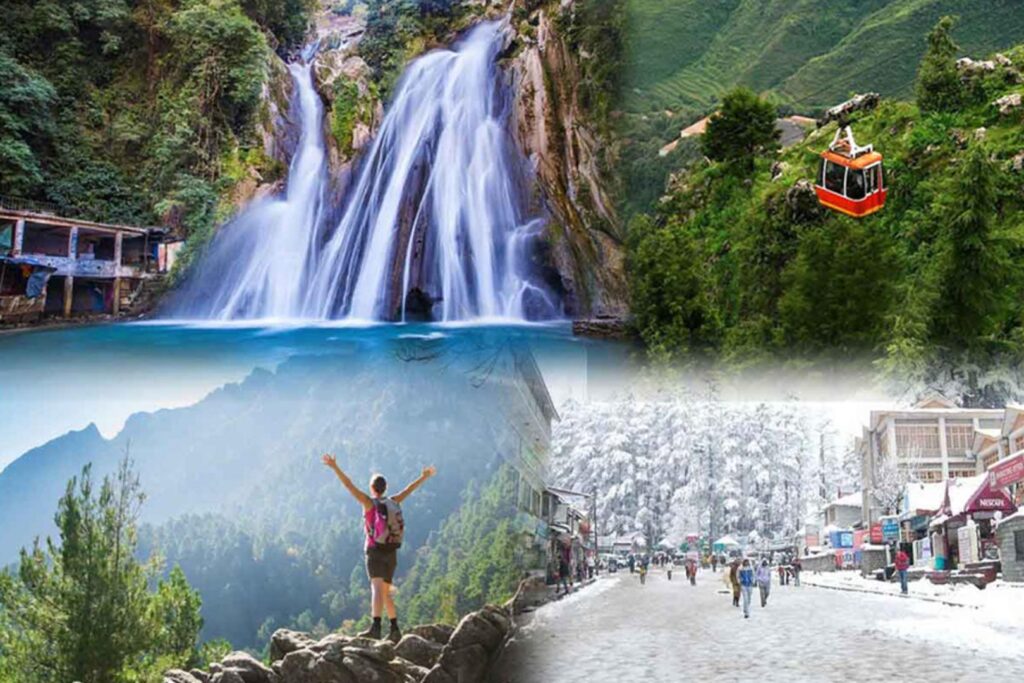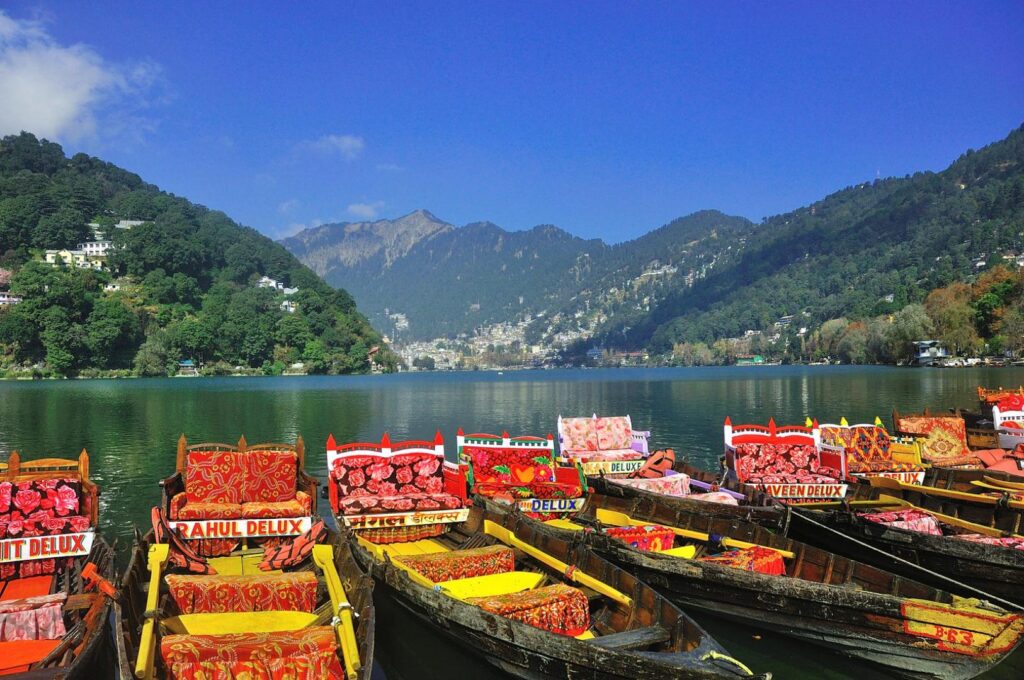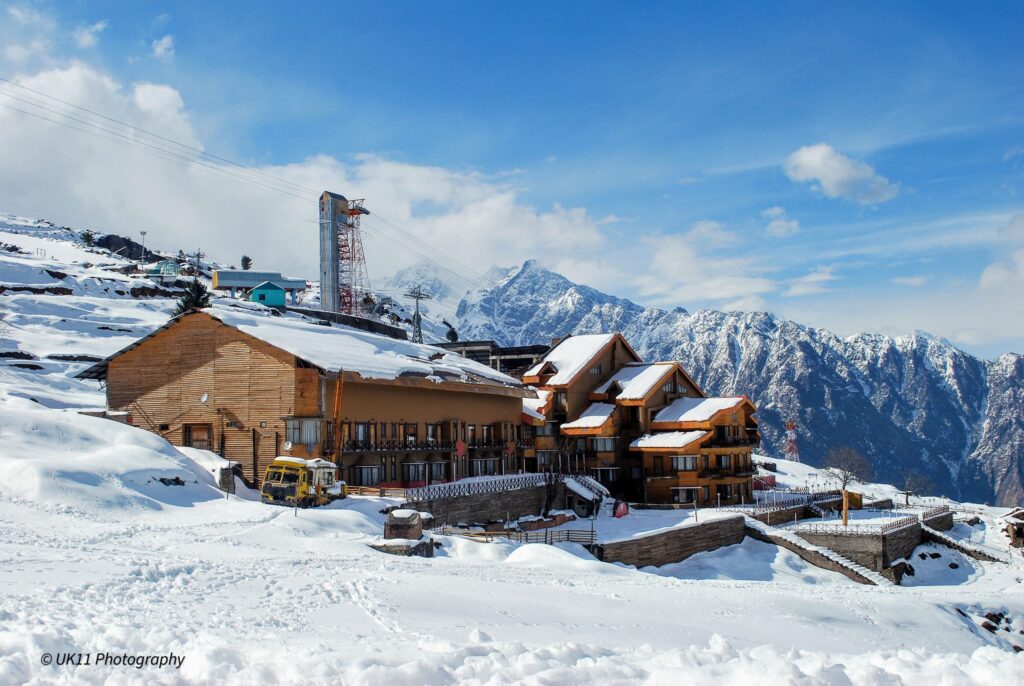Rishikesh

Rishikesh, a picturesque town in the
northern state of Uttarakhand, India, holds significant cultural, spiritual,
and natural prominence. Here's a rundown on what makes Rishikesh special:
1.
Spiritual Hub: Rishikesh is often referred to as the "Yoga Capital of the
World." It's renowned for its numerous ashrams, yoga centers, and
meditation retreats. Many seekers and spiritual enthusiasts flock here to learn
yoga, meditation, and to delve into spiritual practices. The Beatles famously
visited Rishikesh in 1968, spending time at the Maharishi Mahesh Yogi's ashram.
2.
Ganges River: The holy Ganges River flows through Rishikesh, making it a
significant pilgrimage site for Hindus. The river is considered sacred and is
believed to have purifying powers. Visitors engage in rituals like bathing in
the river's waters and performing prayers on its banks.
3.
Adventure Sports: Rishikesh is also a hub for adventure sports, particularly
river rafting. The rapids of the Ganges offer thrilling experiences for rafting
enthusiasts. Other adventure activities include bungee jumping, cliff jumping,
kayaking, and trekking in the nearby Himalayan foothills.
4.
Temples and Ghats: The town is dotted with ancient temples
and ghats (steps leading to the river). The most prominent temples include the
Trayambakeshwar Temple, Bharat Mandir, and Neelkanth Mahadev Temple. The
Triveni Ghat is famous for its evening Ganga Aarti (prayer ceremony) where
devotees gather to witness the spectacle.
5.
Natural Beauty: Nestled in the foothills of the Himalayas, Rishikesh is blessed
with breathtaking natural beauty. Surrounded by lush forests, verdant hills,
and the flowing Ganges, it offers ample opportunities for nature walks, hikes,
and peaceful retreats.
6.
Music and Culture: Rishikesh has a vibrant cultural scene
with music and arts festivals happening throughout the year. The International
Yoga Festival, held annually in March, attracts participants and spiritual
leaders from around the globe. Additionally, Rishikesh is a melting pot of
diverse cultures, with influences from various parts of India and the world.
7.
Gateway to the Char Dham: Rishikesh serves as the
gateway to the Char Dham pilgrimage sites of Yamunotri, Gangotri, Kedarnath,
and Badrinath. Pilgrims often stop here for a spiritual recharge before
embarking on their journey to these sacred sites.
Overall, Rishikesh offers a
unique blend of spirituality, adventure, and natural beauty, making it a
must-visit destination for travelers seeking solace, adventure, or spiritual
enlightenment.
Rishikesh, a picturesque town in the
northern state of Uttarakhand, India, holds significant cultural, spiritual,
and natural prominence. Here's a rundown on what makes Rishikesh special:
1.
Spiritual Hub: Rishikesh is often referred to as the "Yoga Capital of the
World." It's renowned for its numerous ashrams, yoga centers, and
meditation retreats. Many seekers and spiritual enthusiasts flock here to learn
yoga, meditation, and to delve into spiritual practices. The Beatles famously
visited Rishikesh in 1968, spending time at the Maharishi Mahesh Yogi's ashram.
2.
Ganges River: The holy Ganges River flows through Rishikesh, making it a
significant pilgrimage site for Hindus. The river is considered sacred and is
believed to have purifying powers. Visitors engage in rituals like bathing in
the river's waters and performing prayers on its banks.
3.
Adventure Sports: Rishikesh is also a hub for adventure sports, particularly
river rafting. The rapids of the Ganges offer thrilling experiences for rafting
enthusiasts. Other adventure activities include bungee jumping, cliff jumping,
kayaking, and trekking in the nearby Himalayan foothills.
4.
Temples and Ghats: The town is dotted with ancient temples
and ghats (steps leading to the river). The most prominent temples include the
Trayambakeshwar Temple, Bharat Mandir, and Neelkanth Mahadev Temple. The
Triveni Ghat is famous for its evening Ganga Aarti (prayer ceremony) where
devotees gather to witness the spectacle.
5.
Natural Beauty: Nestled in the foothills of the Himalayas, Rishikesh is blessed
with breathtaking natural beauty. Surrounded by lush forests, verdant hills,
and the flowing Ganges, it offers ample opportunities for nature walks, hikes,
and peaceful retreats.
6.
Music and Culture: Rishikesh has a vibrant cultural scene
with music and arts festivals happening throughout the year. The International
Yoga Festival, held annually in March, attracts participants and spiritual
leaders from around the globe. Additionally, Rishikesh is a melting pot of
diverse cultures, with influences from various parts of India and the world.
7.
Gateway to the Char Dham: Rishikesh serves as the
gateway to the Char Dham pilgrimage sites of Yamunotri, Gangotri, Kedarnath,
and Badrinath. Pilgrims often stop here for a spiritual recharge before
embarking on their journey to these sacred sites.
Overall, Rishikesh offers a
unique blend of spirituality, adventure, and natural beauty, making it a
must-visit destination for travelers seeking solace, adventure, or spiritual
enlightenment.
Mussoorie

Mussoorie is a
charming hill station nestled in the Indian state of Uttarakhand, often
referred to as the "Queen of Hills." Here's an overview of this
picturesque destination:
1. Location: Mussoorie is located in the foothills of the
Garhwal Himalayan range, about 35 kilometers from the state capital, Dehradun.
Situated at an altitude of around 1,880 meters (6,170 feet), it offers
breathtaking views of the surrounding Himalayan peaks.
2. History: The history of Mussoorie dates back to the
early 19th century when it was established by the British as a summer retreat.
It quickly gained popularity among British officials and soldiers seeking
respite from the scorching Indian plains. Over the years, it has evolved into a
prominent tourist destination.
3. Attractions: Mussoorie offers a plethora of attractions
for visitors:
·
Gun Hill:
The second-highest point in Mussoorie, offering panoramic views of the
Himalayan range.
·
Kempty Falls:
A picturesque waterfall located about 15 kilometers from Mussoorie, popular for
picnics and bathing.
·
Mall Road:
A bustling street lined with shops, restaurants, and colonial-era buildings,
perfect for leisurely strolls.
·
Lal Tibba:
The highest point in Mussoorie, providing stunning views of the snow-capped
peaks.
·
Mussoorie Lake: A serene lake surrounded by lush greenery, ideal for boating
and picnics.
·
Company Garden: A beautifully landscaped garden featuring colorful flowers, a
mini waterfall, and boating facilities.
4. Adventure Activities: Mussoorie offers a range of adventure
activities for thrill-seekers, including trekking, paragliding, zip-lining, and
mountain biking.
5. Weather: Mussoorie experiences a pleasant climate
throughout the year. Summers (March to June) are mild and ideal for
sightseeing, while winters (November to February) bring chilly temperatures and
occasional snowfall, making it a popular destination for snow lovers.
6. Cuisine: The local cuisine of Mussoorie is influenced
by Garhwali and Tibetan flavors. Visitors can indulge in delicious dishes such
as momos, thukpa, Garhwali dal, and local sweets like bal mithai and singodi.
7. Accommodation: Mussoorie offers a wide range of
accommodation options, including luxury resorts, budget hotels, guesthouses,
and homestays, catering to every type of traveler.
Overall, Mussoorie's
natural beauty, pleasant climate, colonial charm, and range of attractions make
it a must-visit destination for nature lovers and adventure enthusiasts alike.
Mussoorie is a
charming hill station nestled in the Indian state of Uttarakhand, often
referred to as the "Queen of Hills." Here's an overview of this
picturesque destination:
1. Location: Mussoorie is located in the foothills of the
Garhwal Himalayan range, about 35 kilometers from the state capital, Dehradun.
Situated at an altitude of around 1,880 meters (6,170 feet), it offers
breathtaking views of the surrounding Himalayan peaks.
2. History: The history of Mussoorie dates back to the
early 19th century when it was established by the British as a summer retreat.
It quickly gained popularity among British officials and soldiers seeking
respite from the scorching Indian plains. Over the years, it has evolved into a
prominent tourist destination.
3. Attractions: Mussoorie offers a plethora of attractions
for visitors:
·
Gun Hill:
The second-highest point in Mussoorie, offering panoramic views of the
Himalayan range.
·
Kempty Falls:
A picturesque waterfall located about 15 kilometers from Mussoorie, popular for
picnics and bathing.
·
Mall Road:
A bustling street lined with shops, restaurants, and colonial-era buildings,
perfect for leisurely strolls.
·
Lal Tibba:
The highest point in Mussoorie, providing stunning views of the snow-capped
peaks.
·
Mussoorie Lake: A serene lake surrounded by lush greenery, ideal for boating
and picnics.
·
Company Garden: A beautifully landscaped garden featuring colorful flowers, a
mini waterfall, and boating facilities.
4. Adventure Activities: Mussoorie offers a range of adventure
activities for thrill-seekers, including trekking, paragliding, zip-lining, and
mountain biking.
5. Weather: Mussoorie experiences a pleasant climate
throughout the year. Summers (March to June) are mild and ideal for
sightseeing, while winters (November to February) bring chilly temperatures and
occasional snowfall, making it a popular destination for snow lovers.
6. Cuisine: The local cuisine of Mussoorie is influenced
by Garhwali and Tibetan flavors. Visitors can indulge in delicious dishes such
as momos, thukpa, Garhwali dal, and local sweets like bal mithai and singodi.
7. Accommodation: Mussoorie offers a wide range of
accommodation options, including luxury resorts, budget hotels, guesthouses,
and homestays, catering to every type of traveler.
Overall, Mussoorie's
natural beauty, pleasant climate, colonial charm, and range of attractions make
it a must-visit destination for nature lovers and adventure enthusiasts alike.
Nainital

Nainital is a charming hill station nestled in the Kumaon region of Uttarakhand, India. Known for its picturesque beauty, serene lakes, and pleasant climate, Nainital is a popular tourist destination throughout the year. Here's a breakdown of what makes Nainital special:
Lakes: Nainital is famous for its scenic lakes, the most prominent being Naini Lake, from which the town derives its name. Boating in Naini Lake is a favorite activity among tourists. Other lakes in the vicinity include Bhimtal, Sattal, Naukuchiatal, and Khurpatal, each offering its own unique charm.
Naina Devi Temple: Perched atop the Naina Hill, overlooking the Naini Lake, is the Naina Devi Temple, dedicated to Goddess Naina Devi. It is a significant pilgrimage site and attracts devotees from far and wide.
Trekking and Adventure Sports: Nainital serves as a gateway to various trekking routes in the Kumaon Himalayas. Treks to places like Tiffin Top, Snow View Point, and Naina Peak offer breathtaking views of the surrounding mountains and valleys. Adventure enthusiasts can also indulge in activities like paragliding, rappelling, and horse riding.
Mall Road: The Mall Road is the heart of Nainital's social and commercial activity. Lined with shops selling souvenirs, handicrafts, woolens, and local delicacies, it's a bustling hub where tourists can shop, dine, and soak in the vibrant atmosphere.
Scenic Views: Nainital offers panoramic views of the surrounding mountains and valleys. The Snow View Point and the Himalaya Darshan Point are popular spots to enjoy breathtaking vistas of the snow-capped peaks of the Himalayas.
Cable Car Ride: The Aerial Ropeway connects Mallital with Snow View Point, providing visitors with a thrilling ride and spectacular views of Nainital town and the surrounding landscapes.
Flora and Fauna: Nainital is blessed with rich biodiversity, with dense forests teeming with a variety of flora and fauna. The nearby Jim Corbett National Park is home to numerous species of wildlife, including tigers, elephants, leopards, and deer.
Colonial Architecture: Nainital boasts colonial-era architecture, evident in its quaint cottages, churches, and government buildings. The Governor's House, also known as Raj Bhavan, is a prime example of British architecture and is open to visitors.
Auli

Auli is a picturesque hill station and a popular skiing destination nestled in the Chamoli district of Uttarakhand, India. Here's a rundown of what makes Auli special:
1. Scenic Beauty: Auli is renowned for its breathtaking panoramic views of the Himalayan peaks, including Nanda Devi, Mana Parvat, and Kamat Kamet. The landscape is adorned with lush greenery during the warmer months and transforms into a winter wonderland when covered in a blanket of snow.
2. Skiing Destination: Auli is one of the best skiing destinations in India, offering pristine slopes and powdery snow. It hosts the annual National Alpine Skiing Championship and attracts skiing enthusiasts from around the world. The skiing season typically lasts from late November to March.
3. Auli Artificial Lake: This man-made lake adds to the charm of Auli and serves as a source of snow for skiing when natural snowfall is insufficient. It also enhances the scenic beauty of the area.
4. Gurso Bugyal: Gurso Bugyal is a vast meadow located near Auli, offering panoramic views of the surrounding Himalayan peaks. It's a popular trekking destination and also a great spot for nature lovers.
5. Auli Ropeway: The Auli Ropeway, also known as the "Gondola," is one of the longest ropeways in Asia. It connects Auli with Joshimath and offers spectacular views of the snow-capped peaks and verdant valleys below.
6. Joshimath: Auli is closely connected to the town of Joshimath, which serves as the gateway to several pilgrimage sites like Badrinath and Hemkund Sahib. Visitors often explore Joshimath's attractions before or after their trip to Auli.
7. Religious Significance: Auli holds religious significance as it is believed to be the place where Shankaracharya attained enlightenment. There's a small temple dedicated to him, known as the Joshimath.
8. Adventure Activities: Apart from skiing, Auli offers opportunities for other adventure activities like trekking, snowboarding, and camping. The region's rugged terrain and natural beauty make it an ideal destination for adventure enthusiasts.
9. Weather: Auli experiences cold temperatures throughout the year due to its high altitude. Summers (April to June) are pleasant, while winters (November to February) are extremely cold with heavy snowfall, making it perfect for skiing.
Overall, Auli is a paradise for nature lovers, adventure enthusiasts, and those seeking solace amidst the serene Himalayan landscape.